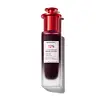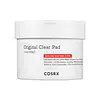What's inside
What's inside
 Key Ingredients
Key Ingredients

 Benefits
Benefits

 Concerns
Concerns

 Ingredients Side-by-side
Ingredients Side-by-side

Water
Skin ConditioningGlycolic Acid
BufferingLactic Acid
BufferingSuccinic Acid
BufferingSodium Hydroxide
BufferingSalicylic Acid
MaskingNiacinamide
SmoothingCapryloyl Salicylic Acid
ExfoliatingGluconolactone
Skin ConditioningLactobionic Acid
BufferingGlycerin
HumectantXanthan Gum
Emulsifying1,2-Hexanediol
Skin ConditioningHydroxyacetophenone
AntioxidantButylene Glycol
HumectantPropylene Glycol
HumectantEnantia Chlorantha Bark Extract
Skin ConditioningGardenia Florida Fruit Extract
Skin ConditioningGlycerophosphoinositol Choline
Skin ProtectingBacillus Ferment
Skin ConditioningBrassica Oleracea Acephala Leaf Extract
HumectantPhenoxyethanol
PreservativePotassium Sorbate
PreservativeEthylhexylglycerin
Skin ConditioningOleanolic Acid
Skin ConditioningCyclodextrin
AbsorbentWater, Glycolic Acid, Lactic Acid, Succinic Acid, Sodium Hydroxide, Salicylic Acid, Niacinamide, Capryloyl Salicylic Acid, Gluconolactone, Lactobionic Acid, Glycerin, Xanthan Gum, 1,2-Hexanediol, Hydroxyacetophenone, Butylene Glycol, Propylene Glycol, Enantia Chlorantha Bark Extract, Gardenia Florida Fruit Extract, Glycerophosphoinositol Choline, Bacillus Ferment, Brassica Oleracea Acephala Leaf Extract, Phenoxyethanol, Potassium Sorbate, Ethylhexylglycerin, Oleanolic Acid, Cyclodextrin
 Reviews
Reviews

Ingredients Explained
These ingredients are found in both products.
Ingredients higher up in an ingredient list are typically present in a larger amount.
1,2-Hexanediol is a synthetic liquid and another multi-functional powerhouse.
It is a:
- Humectant, drawing moisture into the skin
- Emollient, helping to soften skin
- Solvent, dispersing and stabilizing formulas
- Preservative booster, enhancing the antimicrobial activity of other preservatives
Butylene Glycol (or BG) is used within cosmetic products for a few different reasons:
Overall, Butylene Glycol is a safe and well-rounded ingredient that works well with other ingredients.
Though this ingredient works well with most skin types, some people with sensitive skin may experience a reaction such as allergic rashes, closed comedones, or itchiness.
Learn more about Butylene GlycolGlycerin is already naturally found in your skin. It helps moisturize and protect your skin.
A study from 2016 found glycerin to be more effective as a humectant than AHAs and hyaluronic acid.
As a humectant, it helps the skin stay hydrated by pulling moisture to your skin. The low molecular weight of glycerin allows it to pull moisture into the deeper layers of your skin.
Hydrated skin improves your skin barrier; Your skin barrier helps protect against irritants and bacteria.
Glycerin has also been found to have antimicrobial and antiviral properties. Due to these properties, glycerin is often used in wound and burn treatments.
In cosmetics, glycerin is usually derived from plants such as soybean or palm. However, it can also be sourced from animals, such as tallow or animal fat.
This ingredient is organic, colorless, odorless, and non-toxic.
Glycerin is the name for this ingredient in American English. British English uses Glycerol/Glycerine.
Learn more about GlycerinSodium Hydroxide is also known as lye or caustic soda. It is used to adjust the pH of products; many ingredients require a specific pH to be effective.
In small amounts, sodium hydroxide is considered safe to use. However, large amounts may cause chemical burns due to its high alkaline.
Your skin has a natural pH and acid mantle. This acid mantle helps prevent harmful bacteria from breaking through. The acid mantle also helps keep your skin hydrated.
"Alkaline" refers to a high pH level. A low pH level would be considered acidic.
Learn more about Sodium Hydroxide